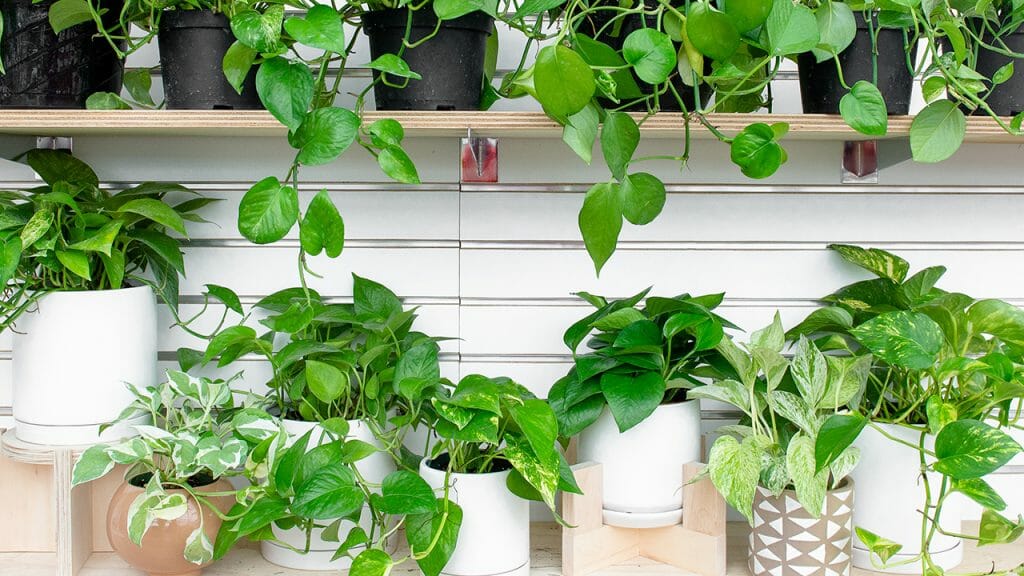Grit is a crucial addition to soil, especially for plants that require well-draining soil. It helps to improve the structure of the soil, allowing water and air to flow more easily through it.
This is especially essential in regions with high clay soil content, as grit aids in breaking the dense clay and improve water drainage.
How to add grit to soil? You can mix grit in a potting mix, add it to the soil before planting or topdress your soil with grit. Aim for a 1:4 ratio of grit to soil to allow for a quality soil structure that can drain quickly and easily.
Let’s get into how to add grit to your soil and why it is so important for the health of your plants.
Why is Grit Important For Soil?
Grit is important for the soil because it helps improve its soil structure. In heavy clay soils, grit helps to break up the compacted clay and improve drainage.
This is especially important for plants that require well-draining soil, as excess water can lead to root rot and other issues.
Grit also helps improve the soil’s overall structure, allowing water and air to flow more easily. This can be especially beneficial for plants that require well-aerated soil, such as most vegetables and herbs.
How to Add Grit to Soil
Are you looking to add grit to your soil and make it more nourishing for plants? You’ve got a few different options:
- Mix grit into the soil before planting: When preparing a new bed for planting, you can mix grit into the soil before planting. This is the perfect option if you have heavy clay soil and want to improve drainage. Mix a few inches of grit into the top 6-12 inches of soil.
- Topdress with grit: If you already have plants in your garden, you can topdress the soil with grit. Spread a thin layer of grit over the top of the soil around your plants. This is a good option to improve the soil’s drainage without disturbing your plants’ roots.
- Use grit in the potting mix: If you are planting in containers or pots, you can mix grit into your potting mix. Mix a few inches of grit into the top 6-12 inches of the potting mix before planting. This will help improve the soil drainage and prevent excess water from sitting in the pot.
How Much Grit Are We Talking?
The amount of grit you should add to your soil will depend on the type of plants you are growing and the condition of your soil. A good gauge to aim for is to mix in about 25-30% grit by volume.
Basically, for every 4 cups of soil, you’ll need to add 1 cup of grit – easy, huh!
Where Can You Get Soil Grit
Grit can be found at most garden centers and home improvement stores. It is typically sold in bags or cubic yards.
You can also find grit at landscape supply yards or online. If you’re going to be buying grit, make sure you choose a type that is appropriate for your plants! Sadly, I made this mistake once!
For example, if you are growing acid-loving plants, you will want to choose neutral or slightly alkaline grit, make sure you read labels and descriptions thoroughly – this is really important!!
Our 4 Tips for Adding Grit to Soil
- Be sure to choose the right type of grit for your plants. Some plants, such as acid-loving plants, require a specific kind of grit.
- Mix the grit thoroughly into the soil to ensure it is evenly distributed.
- Water the soil well after adding grit to help it settle into the soil and improve drainage.
- If you are topdressing with grit, leave enough space around the base of your plants to allow for proper air circulation.
A Few Additional Benefits
A few other advantages of getting grit into your soil, besides improved structure and water drainage are:
- Grit can help to suppress weeds by providing a physical barrier.
- Grit can help to retain moisture in the soil, which is especially beneficial in dry or hot climates.
- Grit can help improve your garden’s overall appearance by adding texture and visual interest.
What Can I Use Instead of Horticultural Grit?
There are a few alternatives to horticultural grit that you can use to improve the structure and drainage of your soil. My favorite is perlite, but there are a few others you should know about, see below.
- Perlite: Perlite is a lightweight, porous material that is made from heated volcanic rock. It is often used in potting mixes to improve drainage and aeration.
- Vermiculite: Vermiculite is a mineral that is similar to perlite, but it is more moisture-absorbent. It is often used in potting mixes to improve moisture retention and aeration. (learn the difference between perlite and vermiculite here)
- Sand: Sand can be used to improve soil drainage, especially in heavy clay soils. Just be sure to use coarse-textured sand, as fine-textured sand may compact and hinder drainage.
- Gravel: Gravel can be used in a similar way to grit to improve the drainage of soil and add texture. Just be sure to choose a size that is appropriate for your plants – larger gravel may be too rough for some plants, while smaller gravel may not provide enough drainage.
Keep in mind that while these alternatives can be used to improve the structure and drainage of the soil, they may not be as effective as horticultural grit. Horticultural grit is specifically designed for use in soil, and its coarser texture makes it more effective at improving drainage and aeration.
Frequently Asked Questions:
Can I use sand instead of horticultural grit?
You can substitute horticultural grit with sand to promote better drainage. However, it’s super important that you only use coarse-textured sand; otherwise, the fine particles may compact and impede water flow, which is the opposite of what we’re trying to achieve.
Should I add grit to soil?
Absolutely, introducing grit to your soil can help promote its texture and drainage. It is especially beneficial in clay-based soils or for plants that need well-drained earth. Just remember to select the suitable type of granular material for your greens, then mix it evenly with the dirt before sowing anything into it.
Conclusion
Adding grit to your soil is essential in ensuring your plants’ health and vitality.
Whether you are preparing a new bed for planting or looking to improve the drainage of an existing garden, grit is a simple and effective solution.
Just be sure to choose the right type of grit for your plants and mix it thoroughly into the soil to ensure that it is evenly distributed. Your plants will thank you for the added grit!





